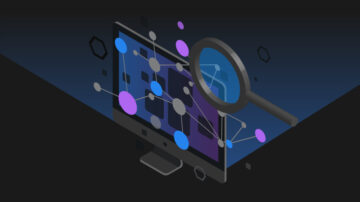
Many organizations turn to hyperconverged infrastructure to streamline resource management with a unified, software-centric platform. See how your organization can make the most of HCI.
More organizations are adopting a hybrid IT environment, with data center and virtualized components. However, today’s IT teams are stretched thin, with little time to firefight issues with deployment, integration, and data center management. Therefore, they need an environment that offers scalable computing, storage, and networking. That’s where hyperconverged infrastructure, or HCI, comes in.
What is hyperconverged infrastructure?
Hyperconverged infrastructure (HCI) is an IT architecture that combines servers, storage, and networking functions into a unified, software-centric platform to streamline resource management. HCI typically includes an on-premises component that gives companies direct control over key aspects of their IT infrastructure, including cloud-based services.
For organizations managing a hybrid cloud infrastructure, HCI has become a go-to strategy.
How does hyperconverged infrastructure work?
HCI converges disparate aspects of IT environments into a centralized gateway to the entire IT infrastructure. Instead of treating storage, server, compute, and network functions as separate entities, HCI virtualizes these resources. Then, hyperconverged infrastructure applies a software-defined management layer, which creates a single, easily configurable IT cluster that teams can deploy, scale, and maintain.
This approach to converging resources makes it possible for organizations to centralize functions, such as authentication, authorization, logging, and security hardening. By centralizing access to resources, teams can easily containerize, configure, and run modern applications across their IT stack using application programming interface (API) connections.
Hyperconverged vs. cloud: Consider the differences
Although the terms hyperconverged infrastructure and cloud are often used interchangeably, they are not the same.
Both offer a way to streamline storage, compute, server, and network management, but their approaches differ. In a cloud model, physical storage, compute, and networking resources are pooled and distributed using an abstraction layer. This enables enterprises to access digital resources on demand. Clouds can take multiple forms, including off-premises public clouds, on-premises private clouds, or hybrid options offering a mix of both.
HCI, meanwhile, is a software-defined framework that virtualizes and combines compute, network, storage, and server resources into a unified platform designed for simplicity and scalability. Most HCI environments are at least partially on premises, allowing IT teams to take direct control of hyperconverged services as needed.
Realizing the benefits of HCI
Implementing HCI comes with multiple business benefits, including the following:
- Consolidates infrastructure resources. In an HCI framework, organizations can consolidate IT resources into a single, unified platform that simplifies management and streamlines operations.
- Controls scale and flexibility on premises. As HCI deployments often occur on premises, organizations gain full control of scale and flexibility.
- Enables comprehensive resource management. HCI deployment resources are combined under software-defined platforms, allowing teams to manage these resources from a single interface.
- Adds resources cost-effectively. IT teams can easily add HCI resources as complete blocks that allow companies to control the costs of additional deployments.
- Consolidates security management. Consolidating resources reduces security fragmentation and makes it easier for IT teams to identify and remediate threats.
- Simplifies operation. HCI deployments naturally reduce IT complexity, which boosts visibility and limits the risk of unexpected vulnerabilities.
Countering the challenges of HCI
While hyperconverged infrastructure simplifies and streamlines IT management, it comes with potential challenges.
First, organizations must consider the impact of combining disparate resources, such as storage and compute. In most cases, the need for these two resources doesn’t scale in tandem; enterprises often need more storage before they require more computing power. But in an HCI framework, purchasing more storage means purchasing more compute. As a result, costs can ramp up quickly if businesses don’t plan out their HCI strategy.
Next, organizations need to effectively monitor and streamline HCI processes. With multiple resources combined into a single infrastructure platform, it’s easy to lose track of what’s happening. Complete observability and effective automation are critical to making the most of HCI deployments.
Finally, making the most of HCI requires a cultural shift. In a standard server or resource model, silos are par for the course. Different departments use different servers and services, and determining who’s responsible for server maintenance is relatively clear-cut.
In a hyperconverged approach, meanwhile, the combination of storage, server, and network operations into a single platform naturally removes these digital silos. However, it doesn’t automatically eliminate cultural divisions. Therefore, organizations need to loop in staff as early as possible and create clear guidelines around use, maintenance, reporting, and chargebacks.
What is the difference between converged and hyperconverged?
Converged infrastructure (CI) aims to reduce the complexity of managing multiple resource types from multiple providers in the same data center. Specialized vendors combine the system and software of different providers into prepackaged tool sets and technologies that help streamline operations.
As physical and virtual technologies evolved, these vendors began producing more tightly integrated services that include compute, networking, and storage managed by intelligent, software-driven virtualization. Popular HCI vendors include Nutanix Acropolis, NetApp HCI, Cisco HyperFlex, and Microsoft Azure Stack HCI.
Additionally, hyperconverged infrastructure offers increased scalability. HCI scales in much the same way as cloud. Organizations can add new resources as needed to increase compute power, storage space, or network performance. But teams don’t add these resources in isolation. Instead, they’re layered in on premises as HCI building blocks that contain all infrastructure components.
Making the most of HCI
In most cases, HCI deployments don’t replace hybrid or multicloud strategies. Instead, they simplify on-premises resource management and help companies get the most from cloud solutions or parallel HCI implementations.
As a result, making the most of HCI requires robust and reliable observability across the full hybrid cloud stack. An automatic and intelligent observability platform like Dynatrace uses deterministic AI to provide deep transactional insight across a variety of technologies, offering an auto-discovered visualization of dynamic HCI frameworks. Combined with fully automated contextual analysis, Dynatrace enables organizations to see what’s happening across HCI frameworks and the systems they manage. In turn, teams can take immediate action to address issues, streamline operations, and improve performance.


